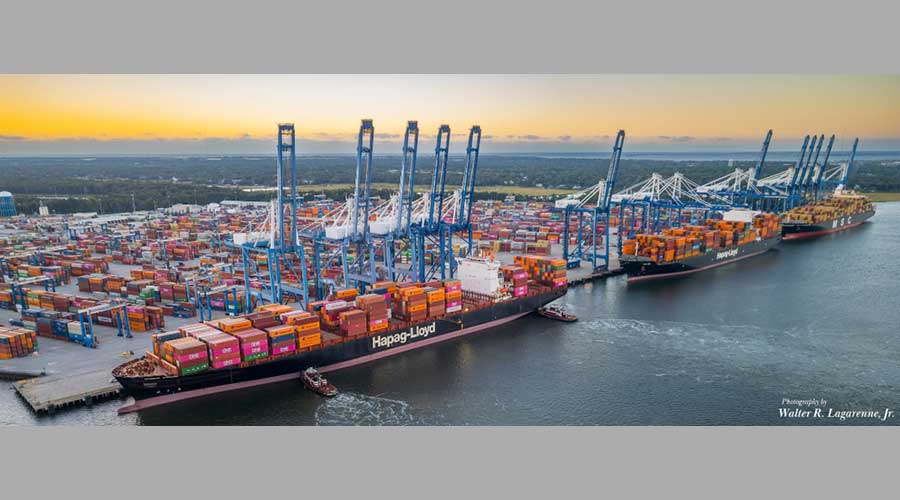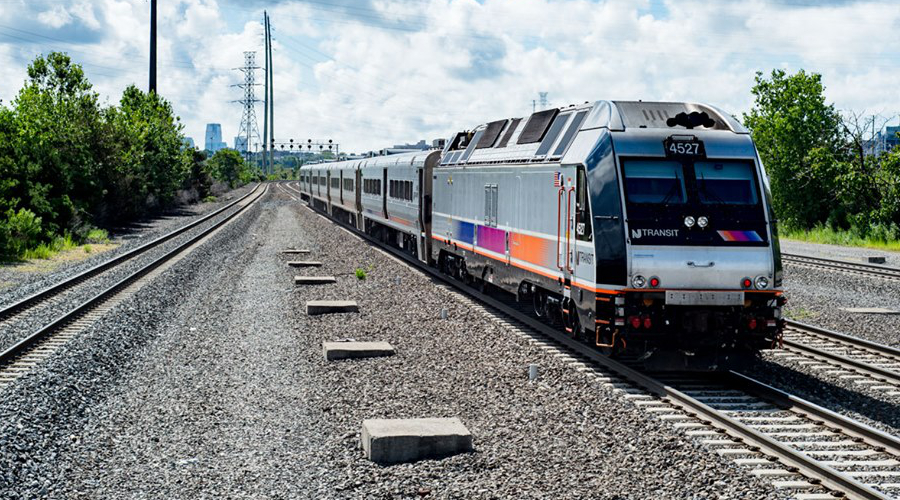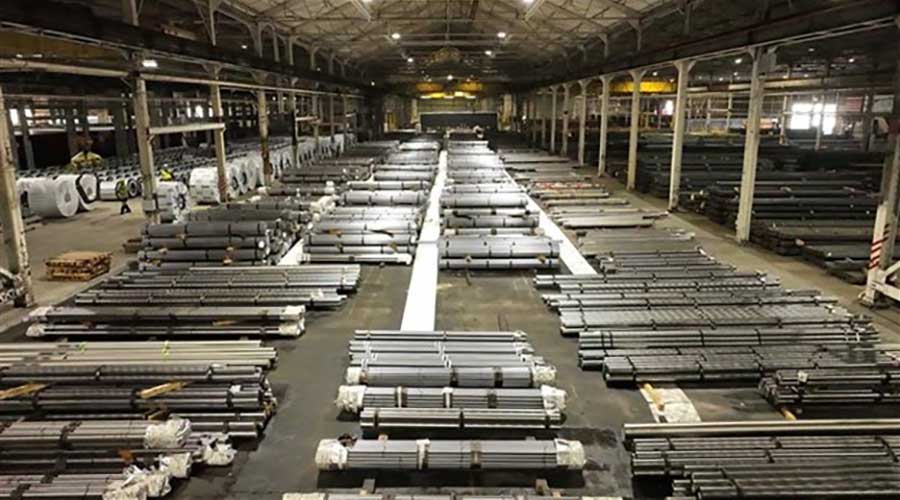Newsletter Sign Up
Stay updated on news, articles and information for the rail industry
Stay updated on news, articles and information for the rail industry
RAIL EMPLOYMENT & NOTICES
Rail News Home
High-Speed Rail
Rail News: High-Speed Rail
11/3/2010
Rail News: High-Speed Rail
HSR's future threatened in Wisconsin, Ohio as Walker and Kasich win governorships
advertisement
If gubernatorial candidates keep the promises they made during election campaigns, a couple of high-speed rail projects could be on the chopping block.
With 99 percent of the precincts reporting as of early Wednesday morning, Republican Scott Walker defeated Democrat Tom Barrett in Wisconsin’s governor race, with Walker gaining 52 percent of the state’s votes vs. Barrett’s 47 percent, according to Milwaukee’s NBC affiliate WTMJ Milwaukee.
Walker made Wisconsin’s proposed high-speed rail line between Milwaukee and Madison a major campaign issue, saying he would kill the project if elected governor. He even set up a website, www.notrain.com, to gather support for stopping the project. The site features an open letter to President Barack Obama.
“No matter how much money you and Governor Doyle try to spend before the end of the year, I will put a stop to this boondoggle the day I take office,” the letter reads. “It’s outrageous for Secretary La Hood to suggest that your administration can force Wisconsin to continue building a train it doesn’t want and cannot afford. Almost as outrageous as the fact that the decision to saddle Wisconsin taxpayers with untold millions in operating and maintenance costs, forever, was never debated or voted on by the Wisconsin legislature.”
But it’s unclear whether or not Walker actually can put an end to the project. Last weekend, Federal Railroad Administrator Joseph Szabo signed a grant agreement with the Wisconsin Department of Transportation obligating all $810 million in high-speed stimulus funds the state had received through the recovery act.
The grant agreement “will ensure Wisconsin benefits from the $810 million recovery act investment in passenger-rail service between Milwaukee and Madison,” U.S. Department of Transportation (USDOT) Press Secretary Olivia Alair wrote in a Nov. 2 email to HSRupdates.com. The grant agreement enables Wisconsin DOT officials to begin signing contracts for much of the corridor work.
When asked if Walker could still kill the project now that the money has been obligated, Alair wrote: “We have nothing further to add on this.”
Meanwhile, in Ohio, Republican John Kasich has defeated Democratic Gov. Ted Strickland by a margin of 49 percent to 47 percent, according to the Cincinnati Enquirer.
Ohio is set to receive $400 million in high-speed stimulus funds to build the 3C “Quick Start” corridor between Cleveland, Columbus, Dayton and Cincinnati, with trains operating at speeds up to 79 mph. However, Kasich said during his campaign that the project would be “dead” if he’s elected.
“It's not going to happen when I become governor, OK?" Kasich said during a political forum in early August, according to an article posted on Bloomberg Businessweek’s website. "If you want that train, I hope you can get over that and vote for me, anyway, but you're not going to get that train."
Kasich believes the train speeds are too slow and the state can’t afford to operate it. Kasich’s speed argument is based on an Amtrak study conducted last year that shows a six-and-a-half-hour travel time between Cleveland and Cincinnati, which includes station dwell times and other factors that make it appear as though trains would operate at an average speed of 39 mph, according to the Bloomberg Businessweek article. Actual trip times will be determined by a final engineering analysis scheduled to be complete next year.
In the meantime, the Ohio DOT is proceeding with engineering and design work for the corridor using $25 million of the state’s $400 million High Speed Intercity Passenger Rail Program grant.
Although Ohio DOT officials believe the study will help support their case that Ohio needs higher-speed rail, the state hasn’t spent the majority of its stimulus grant, Ohio DOT Deputy Director Scott Varner told HSRupdates.com in early September.
“We have not purchased trains and we have not yet invested in any additional track,” he said. “It would be very disappointing to see someone prevent that.”
Although Wisconsin and Ohio were the two states where Republican gubernatorial candidates took a strong stance against high-speed rail, candidates in other states raised issues with their respective states’ ability to fund the projects.
In California, Republican candidate Meg Whitman said that she believed the state couldn’t afford the costs associated with high-speed rail because of California’s current fiscal crisis, according to an article posted July 9 on the Sacramento Bee’s website.
Whitman was defeated by Democratic candidate Jerry Brown by a 54 percent to 41 percent margin, according to the Bee. Brown favors the state’s high-speed rail program, saying on his campaign website that he “supports high speed rail as a clean, fast, accessible alternative to air transportation and long in-state automobile trips. This will create jobs and bring our communities closer together. As our airports and highways become more crowded, the need for high speed rail becomes even more acute.”
And in Florida, Republican candidate Rick Scott has said he opposes using federal stimulus money in the state, where the Florida DOT has received $1.25 billion in recovery act dollars to build the Tampa-to-Orlando high-speed rail segment. The state will receive an additional $800 million in FY2010 transportation appropriations funds, the USDOT announced last week.
"Rick Scott has no particular aversion to creating a high-speed rail system in Florida," one of Scott’s campaign spokesman said in an Oct. 25 article in the Sarasota Herald-Tribune. "However, he does believe that before the state should commit to such a financial obligation, both the upfront capital and ongoing operating cost, that the investment must be justified by demonstrating a return on investment to the citizens whose tax money would be used to fund the system."
As of early Wednesday morning, Scott was leading Democratic governor Alex Sink — who supports high-speed rail — by a narrow margin, but the race was still too close to call, according to South Florida’s CBS affiliate CBS4 WFOR.
Whether any of the elected candidates can — or will — stop their respective states’ high-speed rail projects remains to be seen. The USDOT continues to remain mum on whether a state can legally return the funds to the federal government once a grant agreement has been signed. And even though the governors-elect in Wisconsin and Ohio have threatened to stop the project, they have yet to say how exactly they would do so, especially if multi-million-dollar contracts are awarded for high-speed rail work between now and the January inaugurations.
What is certain: By law, the federal High Speed Intercity Passenger Rail Program funds awarded through the recovery act must be used for passenger-rail purposes. And if a state were to refuse those funds, the dollars would be reallocated to rail projects in other states.
— Angela Cotey
With 99 percent of the precincts reporting as of early Wednesday morning, Republican Scott Walker defeated Democrat Tom Barrett in Wisconsin’s governor race, with Walker gaining 52 percent of the state’s votes vs. Barrett’s 47 percent, according to Milwaukee’s NBC affiliate WTMJ Milwaukee.
Walker made Wisconsin’s proposed high-speed rail line between Milwaukee and Madison a major campaign issue, saying he would kill the project if elected governor. He even set up a website, www.notrain.com, to gather support for stopping the project. The site features an open letter to President Barack Obama.
“No matter how much money you and Governor Doyle try to spend before the end of the year, I will put a stop to this boondoggle the day I take office,” the letter reads. “It’s outrageous for Secretary La Hood to suggest that your administration can force Wisconsin to continue building a train it doesn’t want and cannot afford. Almost as outrageous as the fact that the decision to saddle Wisconsin taxpayers with untold millions in operating and maintenance costs, forever, was never debated or voted on by the Wisconsin legislature.”
But it’s unclear whether or not Walker actually can put an end to the project. Last weekend, Federal Railroad Administrator Joseph Szabo signed a grant agreement with the Wisconsin Department of Transportation obligating all $810 million in high-speed stimulus funds the state had received through the recovery act.
The grant agreement “will ensure Wisconsin benefits from the $810 million recovery act investment in passenger-rail service between Milwaukee and Madison,” U.S. Department of Transportation (USDOT) Press Secretary Olivia Alair wrote in a Nov. 2 email to HSRupdates.com. The grant agreement enables Wisconsin DOT officials to begin signing contracts for much of the corridor work.
When asked if Walker could still kill the project now that the money has been obligated, Alair wrote: “We have nothing further to add on this.”
Meanwhile, in Ohio, Republican John Kasich has defeated Democratic Gov. Ted Strickland by a margin of 49 percent to 47 percent, according to the Cincinnati Enquirer.
Ohio is set to receive $400 million in high-speed stimulus funds to build the 3C “Quick Start” corridor between Cleveland, Columbus, Dayton and Cincinnati, with trains operating at speeds up to 79 mph. However, Kasich said during his campaign that the project would be “dead” if he’s elected.
“It's not going to happen when I become governor, OK?" Kasich said during a political forum in early August, according to an article posted on Bloomberg Businessweek’s website. "If you want that train, I hope you can get over that and vote for me, anyway, but you're not going to get that train."
Kasich believes the train speeds are too slow and the state can’t afford to operate it. Kasich’s speed argument is based on an Amtrak study conducted last year that shows a six-and-a-half-hour travel time between Cleveland and Cincinnati, which includes station dwell times and other factors that make it appear as though trains would operate at an average speed of 39 mph, according to the Bloomberg Businessweek article. Actual trip times will be determined by a final engineering analysis scheduled to be complete next year.
In the meantime, the Ohio DOT is proceeding with engineering and design work for the corridor using $25 million of the state’s $400 million High Speed Intercity Passenger Rail Program grant.
Although Ohio DOT officials believe the study will help support their case that Ohio needs higher-speed rail, the state hasn’t spent the majority of its stimulus grant, Ohio DOT Deputy Director Scott Varner told HSRupdates.com in early September.
“We have not purchased trains and we have not yet invested in any additional track,” he said. “It would be very disappointing to see someone prevent that.”
Although Wisconsin and Ohio were the two states where Republican gubernatorial candidates took a strong stance against high-speed rail, candidates in other states raised issues with their respective states’ ability to fund the projects.
In California, Republican candidate Meg Whitman said that she believed the state couldn’t afford the costs associated with high-speed rail because of California’s current fiscal crisis, according to an article posted July 9 on the Sacramento Bee’s website.
Whitman was defeated by Democratic candidate Jerry Brown by a 54 percent to 41 percent margin, according to the Bee. Brown favors the state’s high-speed rail program, saying on his campaign website that he “supports high speed rail as a clean, fast, accessible alternative to air transportation and long in-state automobile trips. This will create jobs and bring our communities closer together. As our airports and highways become more crowded, the need for high speed rail becomes even more acute.”
And in Florida, Republican candidate Rick Scott has said he opposes using federal stimulus money in the state, where the Florida DOT has received $1.25 billion in recovery act dollars to build the Tampa-to-Orlando high-speed rail segment. The state will receive an additional $800 million in FY2010 transportation appropriations funds, the USDOT announced last week.
"Rick Scott has no particular aversion to creating a high-speed rail system in Florida," one of Scott’s campaign spokesman said in an Oct. 25 article in the Sarasota Herald-Tribune. "However, he does believe that before the state should commit to such a financial obligation, both the upfront capital and ongoing operating cost, that the investment must be justified by demonstrating a return on investment to the citizens whose tax money would be used to fund the system."
As of early Wednesday morning, Scott was leading Democratic governor Alex Sink — who supports high-speed rail — by a narrow margin, but the race was still too close to call, according to South Florida’s CBS affiliate CBS4 WFOR.
Whether any of the elected candidates can — or will — stop their respective states’ high-speed rail projects remains to be seen. The USDOT continues to remain mum on whether a state can legally return the funds to the federal government once a grant agreement has been signed. And even though the governors-elect in Wisconsin and Ohio have threatened to stop the project, they have yet to say how exactly they would do so, especially if multi-million-dollar contracts are awarded for high-speed rail work between now and the January inaugurations.
What is certain: By law, the federal High Speed Intercity Passenger Rail Program funds awarded through the recovery act must be used for passenger-rail purposes. And if a state were to refuse those funds, the dollars would be reallocated to rail projects in other states.
— Angela Cotey


 2025 MOW Spending Report: Passenger-rail programs
2025 MOW Spending Report: Passenger-rail programs
 Gardner steps down as Amtrak CEO
Gardner steps down as Amtrak CEO
 Guest comment: Oliver Wyman’s David Hunt
Guest comment: Oliver Wyman’s David Hunt
 Women of Influence in Rail eBook
Women of Influence in Rail eBook
 railPrime
railPrime







